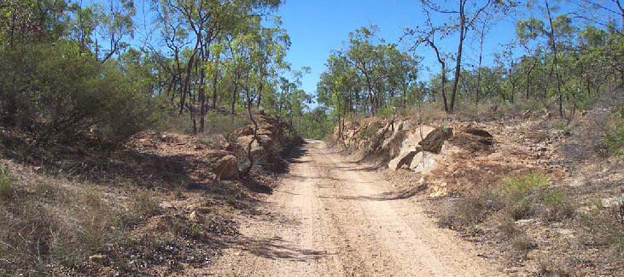
Gurrumbah was surveyed by the mines department on 9th February 1906. Earlier known as Melaney’s Pocket, gold was discovered in the Mount Luxton area near Gurrumbah in 1896. Sam Luxon ran Cobb & Co’s coach change here, known as the Pocket Change, situated on MHL 835 as shown on the plan. The Village Blacksmith tin mine was found the following year and a tin battery erected in 1906. It closed down in 1921.
Gurrumbah spent a period in the doldrums between 1908 and 1912 when ore from the Prince Alfred mine led a revival. The battery was a 10-head machine capable of treating 30 tons of ore per day. F. Reid bought the battery and removed it to Cardross in 1932. Cobb and Co. had their horse change about a kilometre down stream from the battery. There were three hotels (W.M.N Barry’s Mining Exchange, J. Hugh’s and W. Linedale’s), two stores (run by Armstrong, Ledlie and Stillman, and Richard Bimrose), a butchery (W. Parr), a cordial factory (W. Irelands), a baker, a school of arts and a post office which operated from 1906 to 1923 and 1926 to 1930.

By 1913, Fred Bimrose and A. L. & S had stores and in 1917 Mary Barry was running the Mining Exchange hotel and Phillip Pearce the butcher shop. W. & J. Lempriere and the Irvinebank Mining Company had ore buying representatives there. In October 1980, John Bird was working alluvial on Wet Creek when he was killed by a reversing front end loader.
Foundations, mango trees, and the grave of a little girl named Eileen Maud Shadforth, who died in 1912 aged thirteen and a half months old, are the only remains today.
The population of the town was:
1906: 211
1910: 97
1914: 85
1969: 1
The full set of images taken during this visit to Gurrumbah are available to be viewed by clicking on the title icon at the left.
Text taken from:
1. 'Angor to Zillmanton: stories of North Queensland’s deserted towns’ by Colin Hooper (2002)/>
Deserted Towns Website
2. ‘Herberton – Mt Garnet: North Queensland Deserted Towns’ by Colin Hooper (2012)
Deserted Towns Website






